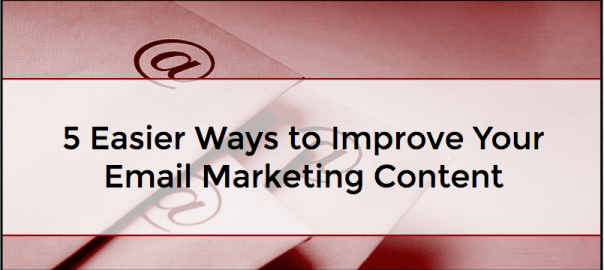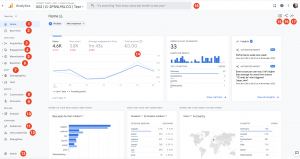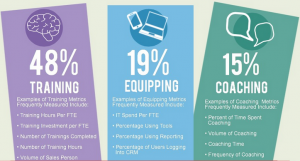
Email marketing is still one of the most powerful online marketing strategies, hands down. Of course, there are ways to develop and run successful social media and distributed content campaigns, but your email list is the most effective tool in your marketing arsenal.
Unlike social media, blogs, and article repositories, with email you’re guaranteed a certain number of eyes on your messaging.
Your job then becomes making sure your built-in audience clicks through.
One constant struggle for email marketers is coming up with great content for your emails. You know it’s important to stay in touch with your subscribers on a regular basis, but there are only so many times you can send messages about specials, discounts, or new product releases before people start removing themselves from your list. You need a steady supply of engaging, interesting content that your subscribers want to read.
Here’s how you can do it, without having to spend huge amounts of time generating fresh content for every single email you send.
Follow the golden rule: Keep it relevant
First, a word of caution about email marketing: in order to keep your subscribers looking forward to your messages, your content must be relevant. No matter how interesting a piece of content might be, if it’s not relevant to your audience, it’s not going to work.
Relevance is crucial beyond the fact that it provides targeted messaging which is more likely to lead to sales. When you consistently deliver relevant content, you build trust with your audience. Consumers strongly prefer content that offers useful information related to their interests without overtly attempting to sell them something.
This isn’t to say you can’t include content that has entertainment value. If it’s relevant to your business message (or you can tie it in to your purpose) even funny YouTube videos can have a place in email marketing.
So how can you generate relevant content? Here are some easier ways to flesh out your email marketing with content your subscribers will enjoy:
1. Send out a blog post roundup
Business blogs are invaluable for content marketing, and can be repurposed in a variety of ways to create great content for your email marketing. If your company posts regularly to a blog, you can create a quick and easy, in-depth email newsletter without having to generate a ton of new content.
You can include brief snippets of each recent blog post with links to read the full post at the end, or use an email newsletter template to plug into your blog feed and generate a visually appealing roundup, where users can click on the posts that interest them and read more. This strategy also helps increase traffic to your website.
If you don’t have a business blog, you can still use this strategy to create regular newsletters using curated blog posts. Gather up links to relevant and informative posts on popular blogs in your industry, and send them to your mailing list on a scheduled basis. This is a great way to provide informative content without pushing a sale—and win greater customer loyalty.
2. Share user-generated content
User-generated content is a great way to engage your audience, increase brand visibility, and provide more content for your email marketing campaigns. Basically, user-generated content (UGC) is anything created by your audience (which you have permission to use). There are many forms of UGC, including:
- Customer testimonials
- User photos and videos
- Contest entries
- Customer stories
Usually, UGC is solicited through your website or social media platforms for a particular purpose, such as a contest. You can even run email contests, and generate content for future email marketing pieces using the entries for those contests.
3. Use older posts or articles as lead magnets (and vice versa)
You can use existing content to help you grow your email marketing lists, as well as supplying your current subscribers with new content. If you have older, in-depth blog posts or articles that are buried in your archives or have been published through other channels, dig them out and update them. These pieces can then be used as lead magnets: incentives for people to subscribe to your mailing list.
By the same token, older and popular posts that are still receiving regular traffic can help you increase your subscriber base. Simply edit these posts by adding a fresh piece of downloadable content to the center of the article, and you’ll capture more email addresses from people who are visiting your blog or website just for that popular article.
4. Repurpose content into autoresponder series
If you have a series of related posts in your blog archives, long-form content such as an ebook or whitepaper, or an article series that was used in the past for content marketing, you can repurpose this content into a series or e-course for your subscribers.
In addition to supplying fresh content, an e-course can also be used as a lead magnet to encourage more opt-in subscriptions.
Use an autoresponder to easily set up and schedule delivery of a lead magnet e-course.
This way, new subscribers will automatically receive the installments on a timed basis, while also being subscribed to your main email marketing list.
5. Promote your content in your email signature
You can increase your marketing reach beyond your subscriber base by promoting your latest blog posts in your email signature. Doing this gives all of your email recipients a reason to visit your website, where your content can engage them further—and you can increase subscriber sign-ups, or even sales.
You can add blog post links manually to your email signature, or use a free browser plugin like WiseStamp to automatically display your latest blog post in your signature via your RSS feed.
Integrating content marketing with email marketing is a powerful way to reach more prospective customers, grow your email lists, keep your subscribers engaged, and increase your conversion rates. Chances are, you already have plenty of content to fuel your email marketing campaigns—so take advantage of your existing resources, and start sending better email marketing messages to your customers.
(158)
Report Post




